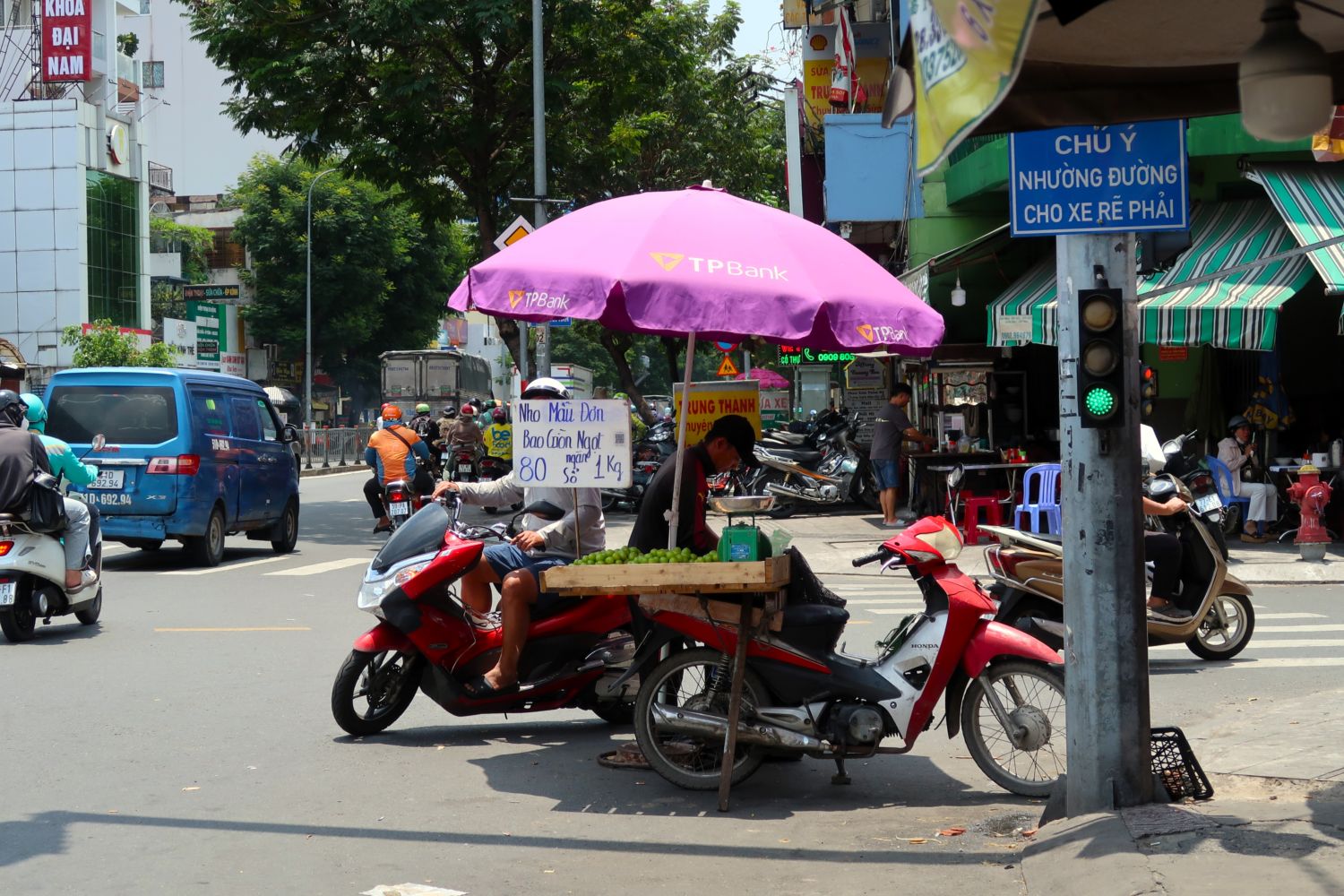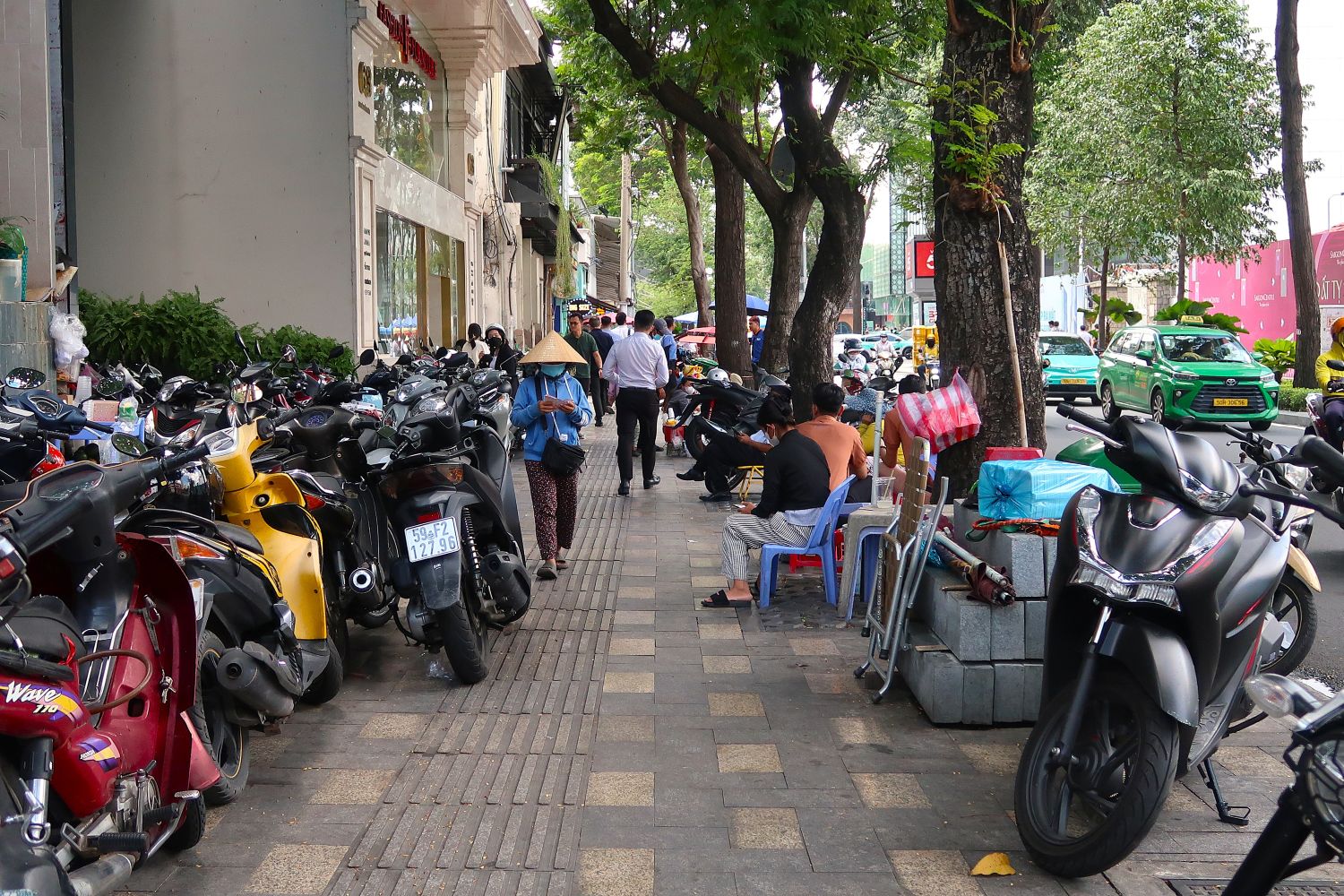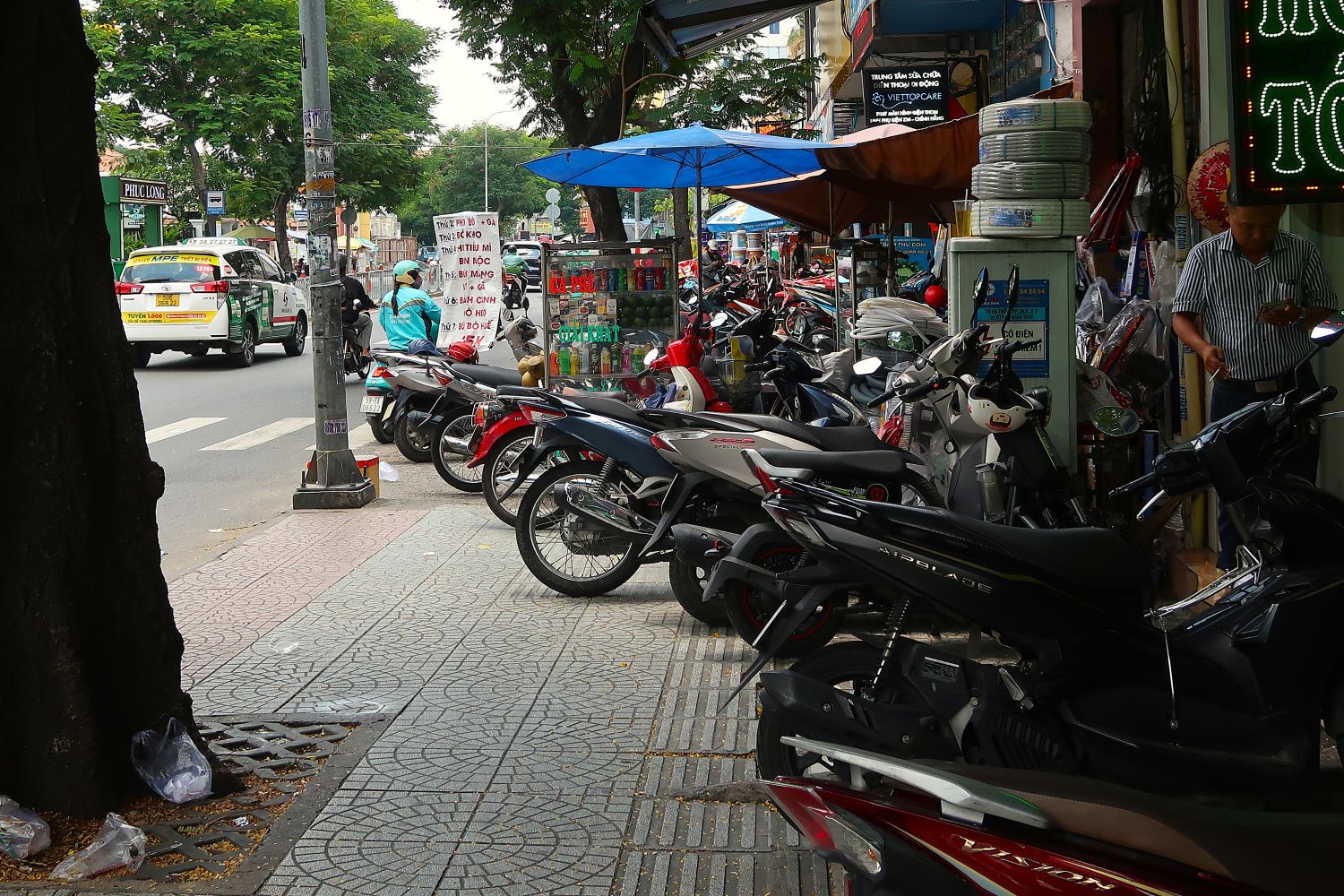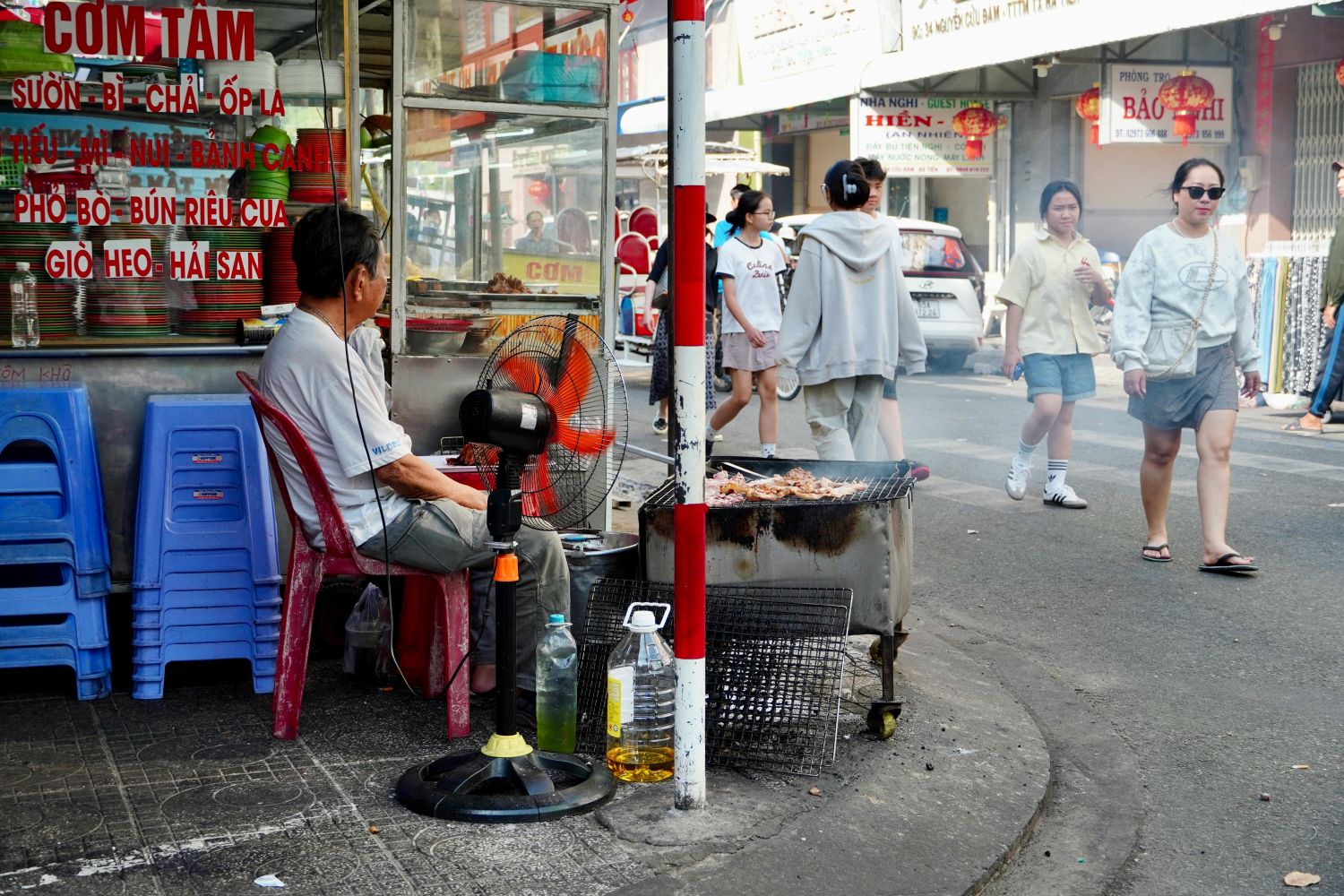Ho Chi Minh City’s sidewalk economy – the unofficial term given to those who depend on sidewalks and roadways to make a living – faces renewed business uncertainty with the termination of a sidewalk leasing policy which had offered streetside vendors legitimacy to operate in public thoroughfare.
Here’s what we know so far.
Legal incompatibilities: HCMC walks back sidewalk fee collection
The city’s Department of Construction has confirmed a temporary sidewalk collection fee program issued under Decision No. 32/2023 to regulate business activity on pedestrian walkways and roadsides has officially been scrapped after more than a year in operation.
While the sidewalk leasing program was always meant to be temporary, the regulatory scheme took effect in September 2023 with hopes of improving urban order and protecting against encroachment on pedestrian walkways. And for the city’s vast population of street vendors, the fee-collection model was a welcome means of granting stability and predictability for the wayside selling which had long ago become Vietnam’s “business-as-usual” practice.
The Observer reports the scheme collected a total 7 billion VND (USD $267,000) in registration and leasing fees, and a separate 4.53 billion VND (USD $173,800) in fines and violations during its time in operation.

Patchwork enforcement: Street vendors face business uncertainty
The future of the fee collection model had already attracted months of speculation from affected streetside vendors after it was partially repealed in January this year, driven by a legal incompatibility which meant provincial-level People’s Committees no longer had the authority to regulate sidewalks and roadways.
The new and overriding national Decree No. 165/2024, introduced to elaborate on Vietnam’s road and traffic laws, now defines permissible infrastructure usage in a way which prohibits all business and trading activities on roads and sidewalks, suggesting a tougher approach is being taken to the urban’s city management policy.

In the central areas of Saigon, Ben Thanh and Cau Ong Lanh Wards (formerly District 1), the fee-based usage of sidewalks was widely supported by locals both for its impact on restoring orderly access for pedestrians, and in allowing vendors to sell with license.
But a review of the paid sidewalk scheme by Saigon News earlier this year revealed mixed results owing to ongoing violations and patchwork enforcement in non-central areas of the city, creating inequality across districts where repeat encroachment was a function of broader socioeconomic circumstances.
In Binh Thanh Ward across the river from central Saigon, sidewalk encroachment by unlicensed street vendors remained rampant despite numerous crackdowns.

A woman selling sugarcane juice from a cart on busy Xo Viet Nghe Tinh Street in Binh Thanh tells us the fee-for-usage scheme was never an issue: “We’re on the outskirts, not in District 1. If I had to pay fees I wouldn’t be selling this for 12,000 VND (USD $0.50).”
That’s contrary to the view of a long-time vendor selling beef noodle soup outside the Pham Viet Chanh Apartment Blocks: “Of course we have to pay to use the sidewalks. They keep saying they’ll scrap the fees, but who knows when that will be?”
The new street use plan
With Ho Chi Minh City now merged with neighboring Vung Tau-Ba Ria and Binh Duong provinces, local media reports work is now underway on a comprehensive street-use plan for uniform rollout, being developed as a pilot project by HCMC’s Institute for Development Studies within the next 12 months.
Many ward-level authorities have now paused enforcement efforts while new regulations take shape. Authorities and affected street vendors alike remain on standby for guidance as the city’s sidewalk economy sits in regulation limbo, wondering how the city’s plans for improved urban management will affect their livelihoods and ability to operate.
When the fee collection program was initially rolled out in 2024, Vietnam’s national broadcaster reported legacy vendors in then District 1, many of whom had conducted business in the same spot for decades, supported the measure as a uniform mechanism which clearly outlined their rights and obligations to operate without fear of penalty.

The tension between technical engineering approaches to city urban planning and the practical realities of HCMC’s sidewalk economy is well-ventilated by Michael Tatarski in a 2017 piece exploring the unique legitimacy of Vietnam’s street vendor culture – still relevant today. Amid an urban development pace which hopes to re-shape the city’s urban image for improved pedestrian safety and sanitation, the sidewalk thus becomes a contested policy space.
For now, organizations and individuals who have already paid for licenses to temporarily conduct business and sell goods will reportedly be allowed to continue operating until the end of the fee payment period. What happens after their license period expires remains a question to be answered.
